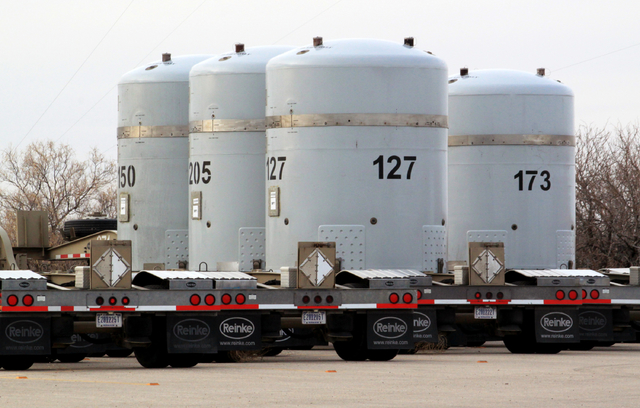ALBUQUERQUE, N.M. — A radiation leak that forced the indefinite closure of the federal government’s only underground nuclear waste repository could have been prevented, a team of investigators said Thursday. ADVERTISING ALBUQUERQUE, N.M. — A radiation leak that forced the
ALBUQUERQUE, N.M. — A radiation leak that forced the indefinite closure of the federal government’s only underground nuclear waste repository could have been prevented, a team of investigators said Thursday.
A combination of poor management, lapses in safety and a lack of proper procedures were outlined in a final report released by the U.S. Department of Energy’s Accident Investigation Board. Officials reviewed the findings Thursday night during a community meeting in Carlsbad.
The investigators spent more than a year looking into the cause of the radiation release at the Waste Isolation Pilot Plant in southeastern New Mexico.
Like a separate team of technical experts, they too found that a chemical reaction inside a drum of waste that had been packaged at Los Alamos National Laboratory forced the lid open, allowing radiation to escape. The contents included nitrate salt residues and organic cat litter that was used to soak up moisture in the waste.
Aside from lab managers, the report places blame on Energy Department headquarters, the National Nuclear Security Administration and the Nuclear Waste Partnership, the contractor that manages the repository. It highlights numerous failures — from Los Alamos lab not having an adequate system for identifying and controlling hazards to federal nuclear officials not ensuring the existence of a “strong safety culture” at the lab.
Investigators found a failure by managers to resolve employee concerns that could have pointed out problems before the waste was shipped from Los Alamos to the repository.
Accident Investigation Board Chair Ted Wyka said during the town hall that some workers reported seeing foaming and yellowish smoke while repackaging waste. After short discussions with their supervisors, they went back to work on the assembly line.
The Energy Department and its contractors are facing $54 million in fines from the state of New Mexico for the failures that led to the mishap. Negotiations are ongoing, and the state has suggested more financial penalties are possible.
With the repository closed indefinitely, efforts to clean up decades of Cold War-era waste at federal facilities around the country are stalled. Federal officials say resuming full operations at the repository could take years and cost more than a half-billion dollars.
David Klaus, the Energy Department’s deputy under secretary for management and performance, said the agency is working on corrective actions to ensure greater oversight of the disposal of radioactive waste.





